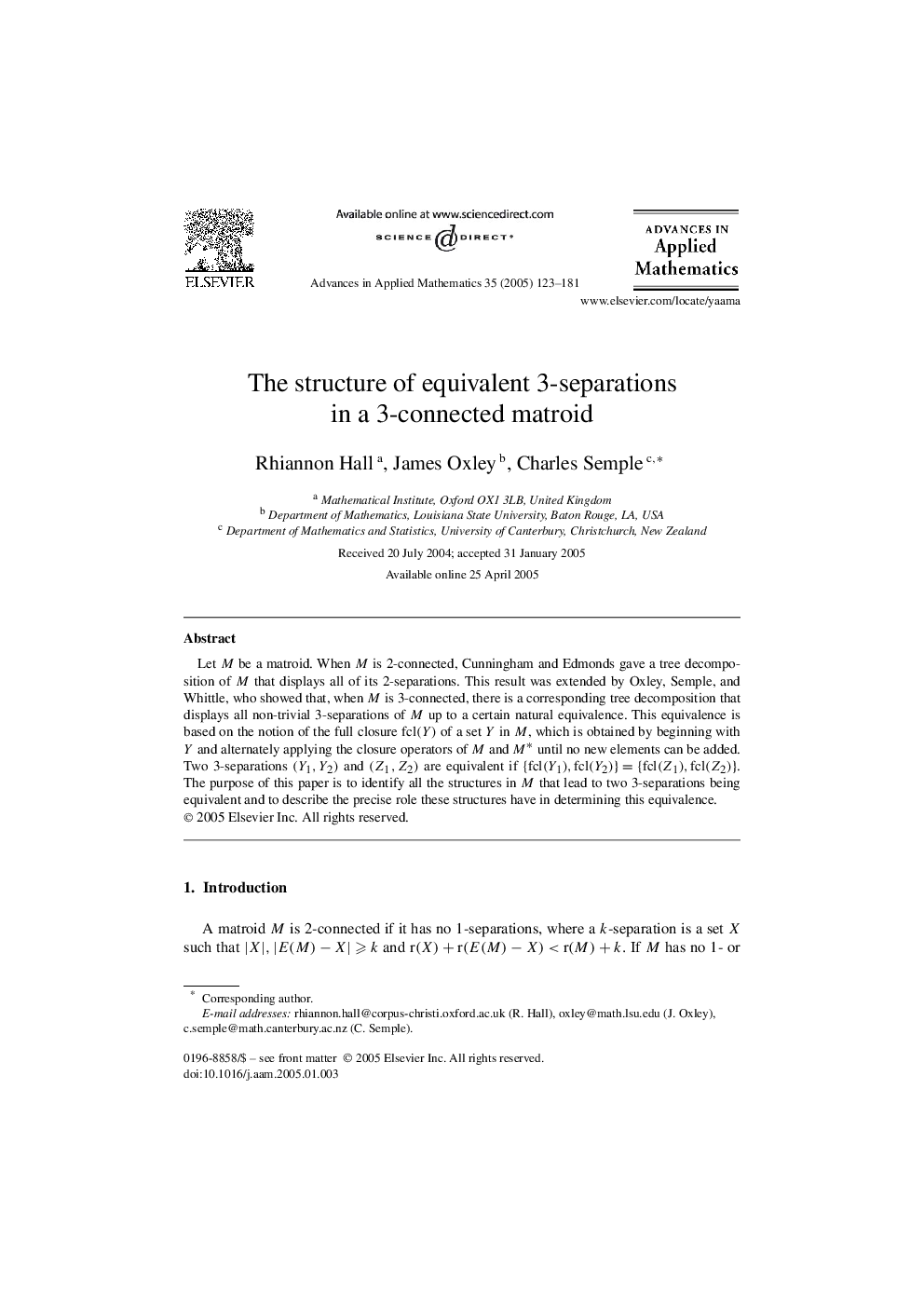| Article ID | Journal | Published Year | Pages | File Type |
|---|---|---|---|---|
| 9505926 | Advances in Applied Mathematics | 2005 | 59 Pages |
Abstract
Let M be a matroid. When M is 2-connected, Cunningham and Edmonds gave a tree decomposition of M that displays all of its 2-separations. This result was extended by Oxley, Semple, and Whittle, who showed that, when M is 3-connected, there is a corresponding tree decomposition that displays all non-trivial 3-separations of M up to a certain natural equivalence. This equivalence is based on the notion of the full closure fcl(Y) of a set Y in M, which is obtained by beginning with Y and alternately applying the closure operators of M and Mâ until no new elements can be added. Two 3-separations (Y1,Y2) and (Z1,Z2) are equivalent if {fcl(Y1),fcl(Y2)}={fcl(Z1),fcl(Z2)}. The purpose of this paper is to identify all the structures in M that lead to two 3-separations being equivalent and to describe the precise role these structures have in determining this equivalence.
Related Topics
Physical Sciences and Engineering
Mathematics
Applied Mathematics
Authors
Rhiannon Hall, James Oxley, Charles Semple,
